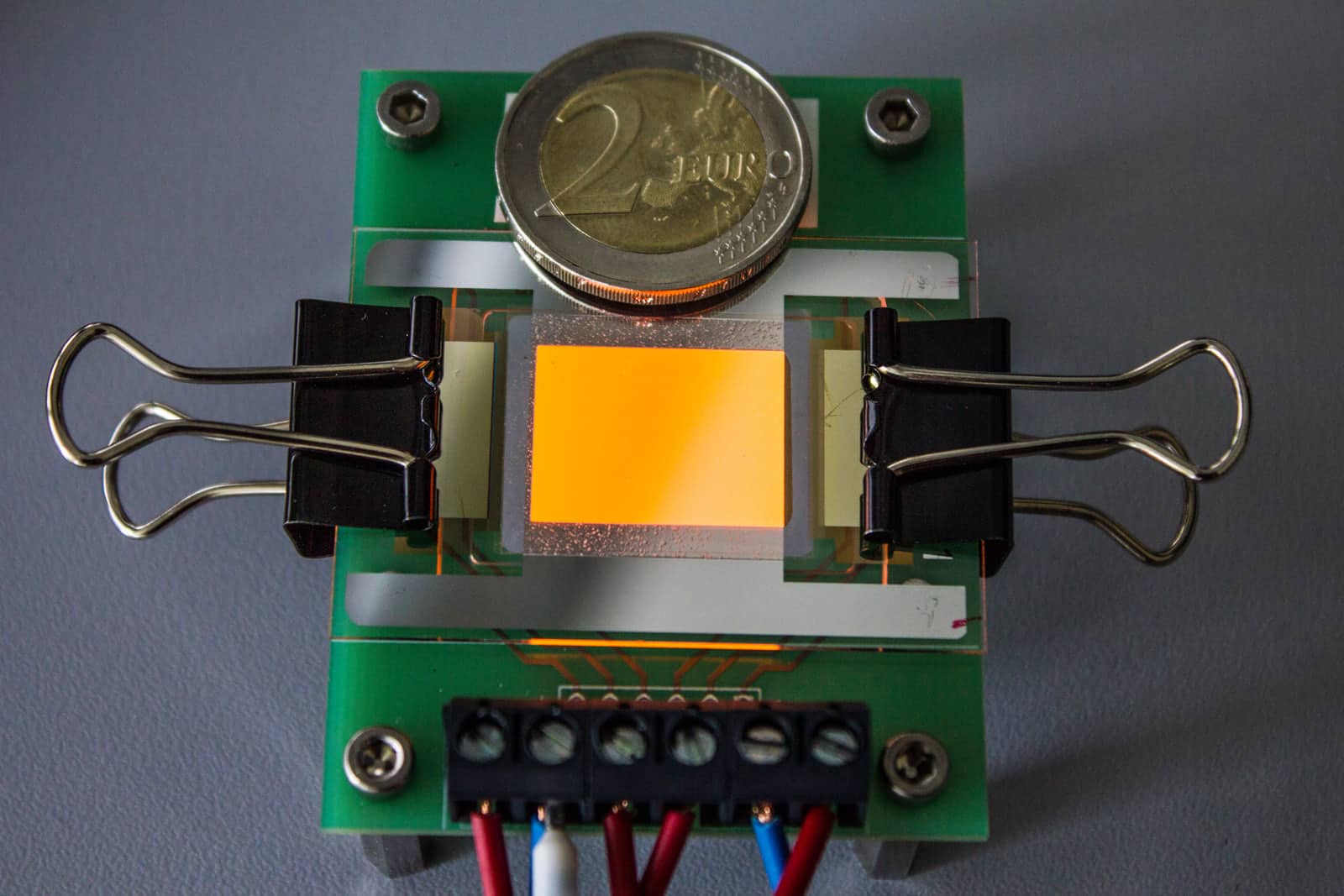
The team, from the Fraunhofer Institute for organic electronics, electron beam and plasma technology FEP in Dresden was working on an EU-funded project known as Gladiator which focuses on production, characterisation and integration of graphene layers. OLEDs (organic light-emitting diodes) are becoming increasingly common in display screens, both large-scale for televisions and small-scale for telephones and other handheld devices; they have superior colour-generating properties compared to inorganic LEDs and are particularly useful in touchscreens.
Working with project partners Graphenea of Spain, a specialist in producing graphene by chemical vapour composition, and Aixtron, a German company which produces vapour deposition equipment for the electronics and semiconductor industry from its facility in Cambridge, the Fraunhofer team placed a wafer of high-purity copper into a stainless steel vacuum chamber and heated it to 800°C before exposing it to a mixture of methane and hydrogen. The methane dissolves in the copper and forms carbon atoms, which spread across the surface of the plate, organising themselves into a layer of graphene. This takes only a few minutes, according to the team.
Once the reaction is complete, the team fixes a carrier polymer to the graphene layer and cools the plate down, before chemically etching the copper layer away and leaving the graphene attached to the carrier polymer. This can leave impurities in the graphene; the next phase of the project will focus on minimising this to make the graphene is pure as possible. "This was a real breakthrough in research and integration of extremely demanding materials," says project leader Beatrice Beyer.
The process produces a an OLED electrode measuring 2cm². As well as display screens, the team believes the electrodes could be used in smart windows, where they could regulate light transmission or serve as an electrode in polarisation filters. "The first products could already be launched in two to three years," Beyer said. The Gladiator project began in 2013 and is scheduled to run until this year.




April 1886: the Brunkebergs tunnel
First ever example of a ground source heat pump?